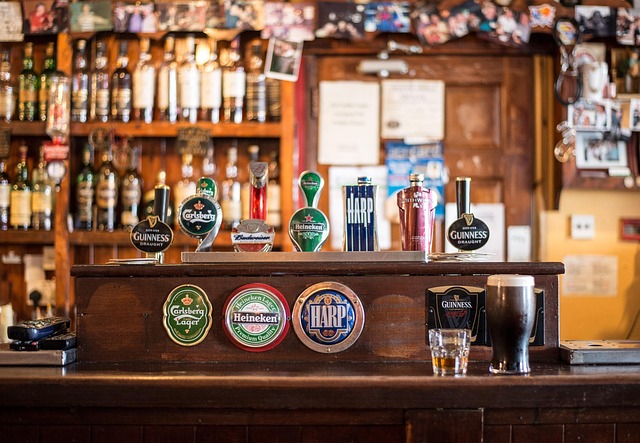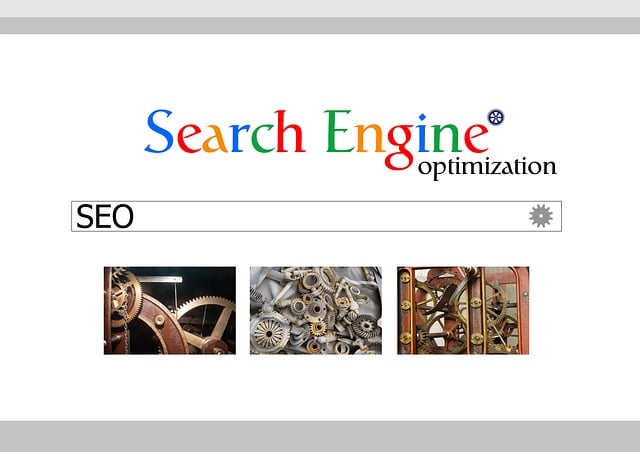A powerful local SEO strategy for restaurants involves optimizing Google My Business listings with accurate, enticing information and special offer updates, encouraging quality reviews on platforms like GMB, Yelp, and TripAdvisor. Utilizing social media platforms for location-based marketing, creating hyperlocal campaigns, and leveraging user-generated content boosts online visibility and engagement. Building backlinks through collaborations and local partnerships enhances website authority. Measuring success with Google Analytics and reviewing keyword rankings and content performance ensures a competitive local SEO strategy in the dynamic digital landscape.
In today’s digital era, a restaurant’s success isn’t just about culinary excellence; it’s significantly influenced by its online visibility. Local SEO for restaurants is a game-changer, enabling them to attract nearby customers actively searching for dining options. This article delves into the essential elements of local SEO, guiding you through understanding its impact, optimizing your online presence, leveraging reviews, keyword research, social media marketing, building backlinks, and measuring success—all tailored to enhance your restaurant’s local search rankings and drive foot traffic.
Understanding Local SEO for Restaurants: Why It Matters

In today’s digital era, Local SEO for restaurants is no longer an optional strategy but a necessity. With online reviews and search engine rankings playing a pivotal role in consumer decisions, understanding local SEO can make or break a restaurant’s success. It allows establishments to connect with their target audience within a specific geographic area, ensuring they appear at the top of local search results when customers are looking for dining options nearby.
By optimizing for Local SEO, restaurants can attract more relevant traffic, increase their online visibility, and foster a strong local presence. This is crucial as it not only drives foot traffic but also builds trust and credibility with potential patrons. Effective local SEO strategies involve claiming and verifying Google Business Profiles, optimizing website content with location-specific keywords, encouraging customer reviews, and engaging in local community events to create a positive online reputation.
Key Components of a Successful Local SEO Strategy

A successful local SEO strategy for restaurants involves several key components. Firstly, claim and optimize your Google My Business (GMB) listing. This is a free and powerful tool that allows you to control how your restaurant appears on Google Maps and search results. Ensure all information, including address, hours of operation, menu highlights, and photos, is accurate and enticing. Regularly update your GMB posts with special offers, events, or seasonal menus to keep customers engaged and informed.
Secondly, focus on earning quality reviews from satisfied diners. Encourage happy patrons to leave positive feedback on GMB, Yelp, TripAdvisor, and other relevant platforms. Positive reviews not only boost your restaurant’s online reputation but also influence potential customers’ decisions. Implement a review management strategy to actively monitor, respond to, and encourage customer testimonials. This demonstrates your commitment to exceptional dining experiences and helps build trust with prospective diners searching for local culinary gems.
Optimizing Your Restaurant's Online Presence

In today’s digital era, a robust online presence is non-negotiable for any restaurant hoping to attract local customers. Optimizing your business for Local SEO means ensuring that your restaurant’s information is accurate and consistent across all relevant online platforms, including Google My Business, Yelp, Facebook, and other industry-specific directories. This includes updating your NAP (Name, Address, Phone number) details, adding high-quality images and videos of your menu items and ambiance, and encouraging satisfied customers to leave reviews. By doing so, you enhance your restaurant’s visibility in local search results, making it easier for potential diners to discover and choose your establishment.
A well-optimized online presence also involves crafting compelling, location-specific content that highlights the unique aspects of your restaurant. Share updates about special events, seasonal menus, or promotions tailored to your local community. Engage with customers through social media platforms, responding promptly to inquiries and comments. This active interaction not only strengthens your restaurant’s reputation but also fosters a sense of community, encouraging repeat visits and word-of-mouth recommendations, which are invaluable assets in the competitive local dining scene.
Claiming and Verifying Your Google Business Profile

Claiming and verifying your Google Business Profile (GBP) is a crucial step in enhancing your local SEO efforts for your restaurant. It’s the first step to ensuring your business appears accurately and prominently in local search results on Google Maps and across Google Search. When you claim your profile, you gain control over how your restaurant is represented online, allowing you to update critical information like operating hours, menu details, and contact data.
Verification adds an extra layer of legitimacy. By confirming your business through traditional mail or other supported methods, Google authenticates that you are indeed the owner or authorized representative. This process boosts trustworthiness in the eyes of both search engines and potential customers, who often rely on Google’s trusted platform to find dining options nearby.
Leveraging Reviews and Ratings to Boost Visibility

Implementing Effective Keyword Research for Local Searches

In the realm of Local SEO for restaurants, keyword research is a strategic cornerstone. Understanding how potential diners search for eateries in their area is paramount. Effective local keywords should capture the essence of your restaurant’s location, cuisine, and unique selling points. For instance, phrases like “best Italian dining in [City Name]” or “local seafood restaurant near me” are powerful as they directly address both the desire for a specific type of food and the nearby availability.
Delve into tools that assist in identifying these keywords, such as Google Trends and local business directories. These resources provide insights into search volumes and user intent, helping you optimize your online presence accordingly. By integrating relevant local keywords into your website content, menu descriptions, and online listings, you enhance visibility in local searches, making your restaurant more appealing to nearby diners.
Utilizing Social Media for Location-Based Marketing

In today’s digital era, Social Media platforms offer a powerful tool for restaurants to engage with their local customers through Location-Based Marketing (LBM). By leveraging platforms like Facebook, Instagram, and Twitter, restaurants can create hyperlocal campaigns that target specific areas, ensuring their offerings reach the right audience. For instance, posting about special offers or new menu items on these platforms, along with precise location tags, can attract nearby potential diners.
Restaurateurs can also utilize user-generated content by encouraging customers to share their dining experiences online, using unique hashtags related to the restaurant and location. This not only promotes word-of-mouth marketing but also provides authentic insights into what the establishment offers, enhancing its Local SEO efforts by creating valuable, location-specific content that increases visibility and attracts more patrons.
Building Backlinks from Local Resources and Partnerships

Building backlinks is a crucial aspect of any successful Local SEO strategy, especially for restaurants looking to boost their online visibility. One effective approach is to collaborate with local resources and businesses that cater to a similar audience. For instance, partnerships with food bloggers, local magazines, or even competitors can lead to valuable link-building opportunities. These entities can help promote your restaurant by sharing their unique experiences, highlighting special events, or featuring menu items on their platforms. Such backlinks not only increase your website’s authority but also expose your restaurant to a wider, locally relevant audience.
Additionally, engaging with local chambers of commerce, tourism boards, and community groups can open doors to diverse backlinking prospects. These organizations often have dedicated websites and newsletters that reach thousands of locals and visitors alike. By offering exclusive content, discounts, or sponsoring events, you can entice these platforms to feature your restaurant, thereby earning valuable backlinks and fostering a positive local online presence.
Measuring and Analyzing the Success of Your Local SEO Efforts

Measuring and analyzing the success of your local SEO efforts is crucial for understanding what tactics are driving foot traffic and online inquiries to your restaurant. Utilize Google Analytics to track key metrics like website visits, bounce rates, and conversion rates from organic search results. Compare these figures with your marketing budget allocated to local SEO to gauge the return on investment (ROI).
Regularly review search rankings for relevant keywords targeting your location. Tools like SEMrush or Ahrefs can help identify high-performing content and pinpoint areas where your restaurant’s online presence needs improvement. By continuously monitoring these metrics, you can adjust your Local SEO strategy in real-time, ensuring that your efforts align with the ever-changing digital landscape and stay ahead of the competition.
